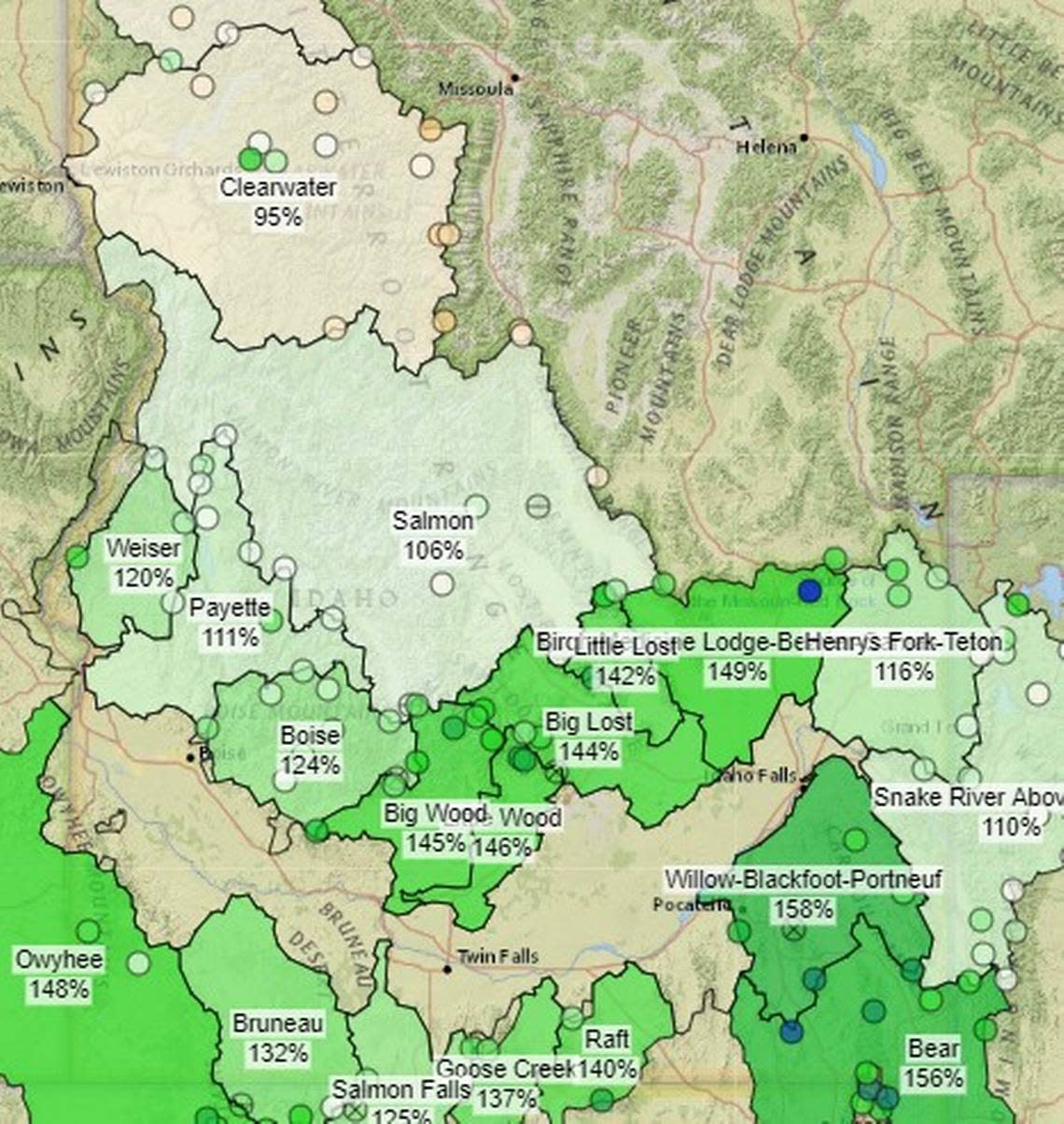It’s been a snowy winter so far in Boise. Does this mean an end to years-long drought?
Winter weather in recent months has left deep snows in Idaho’s mountains, indicating an above-average snowpack for much of the state, with several months of the cold season left to come. But concerns about soil moisture in the mountains portend that stream flows could be close to normal, consigning parts of the state to another summer with drought.
Watersheds in Central and Southern Idaho show large snowpack levels, according to data from the U.S. Department of Agriculture. The Boise River basin has 124% of normal of snow water equivalent, which is a measure of how much water is contained in snow. The Owyhee River basin has 148% of normal, while the Payette River basin has 111%, and the Big and Little Wood River basins have 145% and 146%, respectively.
“South of the Clearwater (River), we’re doing really, really well,” Erin Whorton, a water supply specialist at the USDA’s Natural Resource Conservation Service, told attendees of the Idaho Water Users Association conference on Wednesday.
Part of the strong precipitation year so far is due to a cold November — five degrees colder than average across the state — which meant that precipitation in the fall landed largely as snow, and the mountains began accumulating snow early, Whorton said.
The cold November followed a dry and hot October.
The early cold weather “is good in some ways for building our snowpack but less good about improving our soil moisture,” Whorton told conference attendees.
Soil acts like a sponge, soaking up melting water in the spring months. When the soil becomes saturated, excess water begins to run off into streams and rivers, filling the state’s reservoirs. The dryer the soil is in the spring, the more water will be absorbed, leading to less water that makes its way to reservoirs, which in turn feed the state’s irrigation systems.
Much of the state is in its third year of drought, with 69% still affected, according to the U.S. Drought Monitor. That means the Gem State is in a deep enough hole that it will likely take significantly more precipitation to pull out.

The state needs between roughly 107% and 175% of normal snowpack — depending on the location — to end drought entirely by mid-May, according to data from the National Oceanic and Atmospheric Administration. A seasonal drought outlook, also from NOAA, showed that much of Central Idaho could come out of drought come April, but that a band along the state’s southern border will likely see drought persist.
“If we just look at the chance of improving drought, not ending drought, by mid-May, we’re looking better,” Whorton said.
With several months of snow season left to go, it can be difficult to predict what will happen. Last year, much of Southern Idaho saw little to no precipitation between late January and March.
“A couple of years have been water-strapped because of the drought, and so that left us with very little reservoir carry-over across a good portion of the state,” Whorton said in a phone interview. “So we’re really relying on the healthy snowpack in order to make up that difference.”
